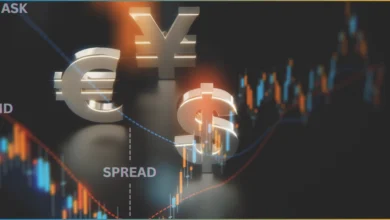How to Use Trendlines for Accurate EUR/USD Trade Entries

There is something timeless about trendlines. They appear simple, almost too basic to matter in a world filled with indicators and algorithms. Yet when drawn correctly, a single line on the chart can offer remarkable clarity. For traders focused on EUR/USD trading, trendlines remain one of the most effective tools for identifying structure, gauging market behavior, and finding entry points that align with real momentum.
Drawing with Intention, Not Assumption
A trendline is not a guess. It should not be forced to fit the market’s movement. Instead, it should connect meaningful swing highs or swing lows in a way that reflects how price has naturally moved. In EUR/USD trading, this usually means starting from a significant turning point and extending the line through a second touch. Only then does it begin to take shape. A trendline gains reliability when price respects it more than once. That repeated reaction is what gives it credibility.
Diagonal Support and Resistance in Action
While horizontal support and resistance get a lot of attention, trendlines add a layer of dynamic movement. They show you where support or resistance is shifting over time. If price bounces off an upward trendline multiple times, it reveals not just structure but strength. In downward trends, the opposite applies. Trendlines help traders stop thinking in straight lines and start visualizing the slope of the market. When applied in EUR/USD trading, this becomes crucial for adapting to changing market conditions.
The Setup Before the Entry
An entry based on a trendline should not happen just because price touches it. It happens when price respects it. There’s a difference. Traders often wait for confirmation — a bounce with a strong candle, a rejection wick, or volume supporting the move. Some add confluence by combining the trendline with Fibonacci levels, moving averages, or round number zones. In EUR/USD trading, where the market can be both technically clean and emotionally reactive, layering confirmations increases confidence in the trade.
Breakouts and Fakeouts
Eventually, all trendlines break. But not all breaks are equal. A decisive break with follow-through might signal a reversal or acceleration. A fakeout, on the other hand, often traps eager traders before price returns to the original path. Recognizing the difference is part art, part experience. In EUR/USD trading, where liquidity is high and institutional algorithms are active, false breaks can be common. Waiting for a retest or a confirmation candle can be the difference between a confident entry and a regretful one.
Multiple Timeframe Harmony
Trendlines become more powerful when they agree across timeframes. A trendline that appears on both the four-hour and daily chart carries more weight than one seen only on the fifteen-minute chart. Traders often zoom out to spot the dominant trend, then zoom in to find precision entries along that same structure. This top-down approach gives context. It allows you to trade the EUR/USD with the bigger picture in mind while still nailing a clean entry on a lower timeframe.
Discipline Over Creativity
It is tempting to draw trendlines that fit your bias. Maybe you want the trade to happen, so you adjust the line. The danger is subtle but real. A forced trendline gives false confidence. The discipline to only draw what is actually there is part of mastering this tool. In EUR/USD trading, objectivity is everything. The market will test your patience. But if your trendline is respected and your entry is timed well, that single diagonal can turn into a profitable roadmap.
Trendlines may seem old school, but they continue to hold their ground as one of the most reliable tools in a trader’s arsenal. When used with precision and confirmed by price action, they offer not just entry points but structure and clarity. For anyone serious about improving their EUR/USD trading, mastering trendlines is not optional. It is essential.



